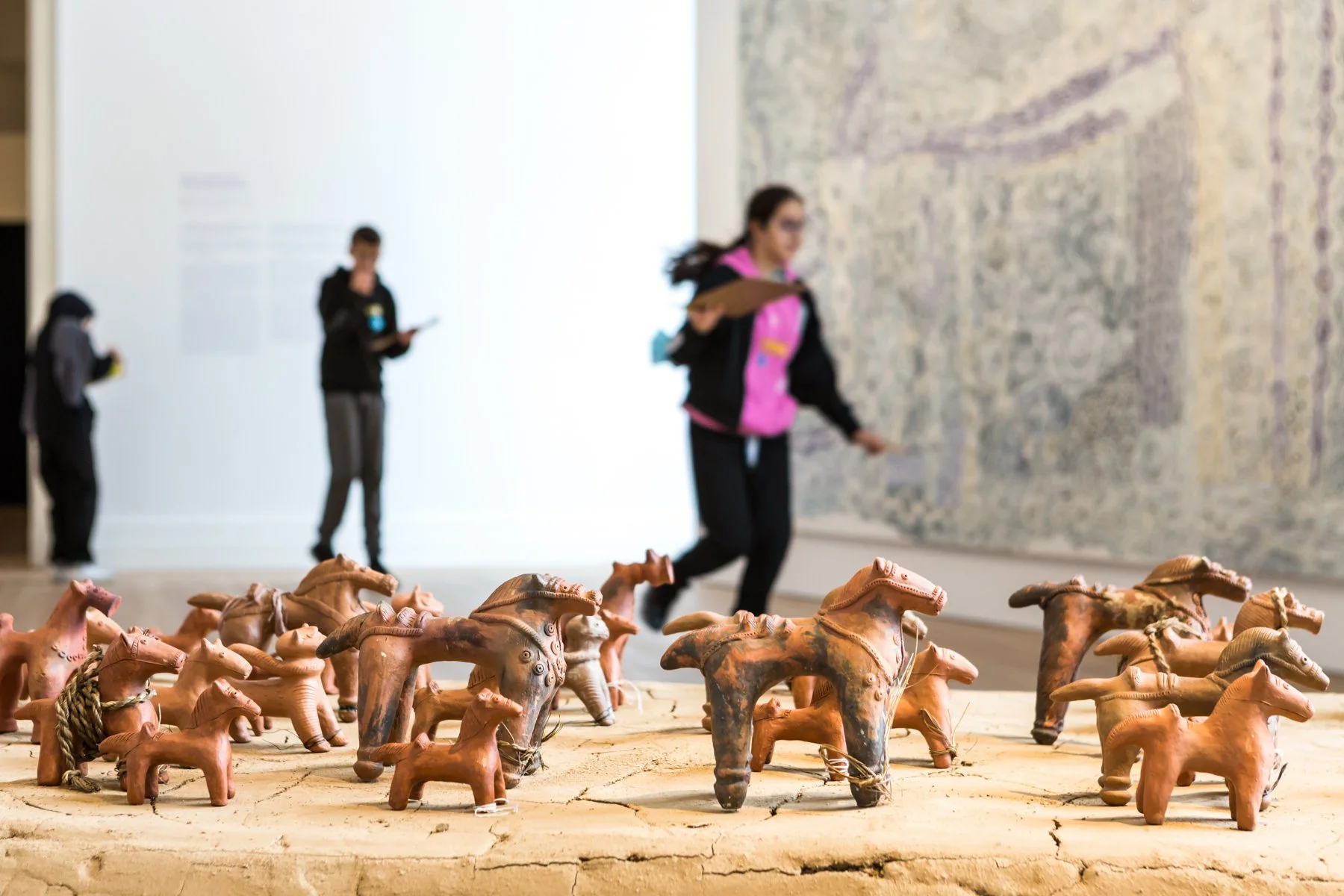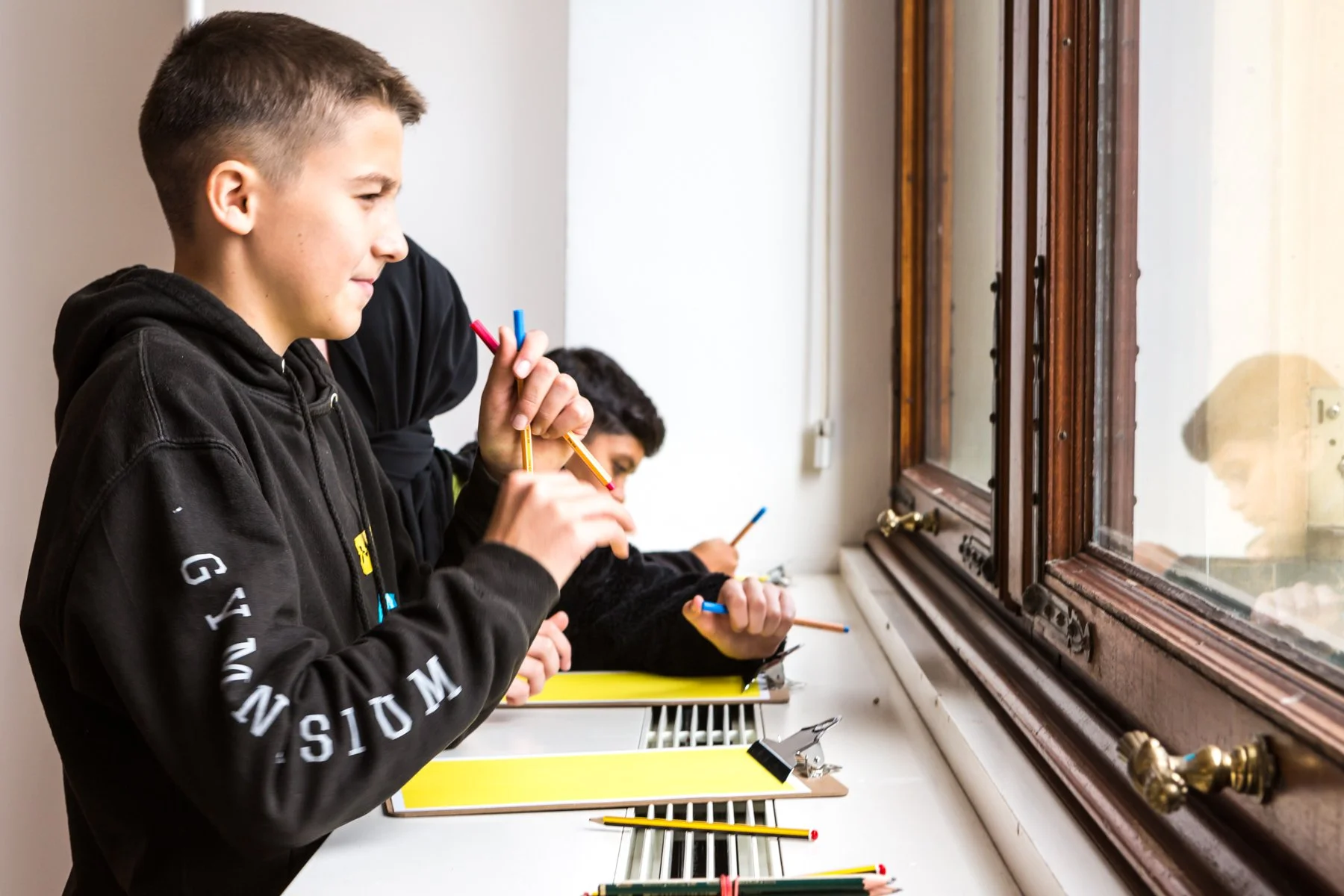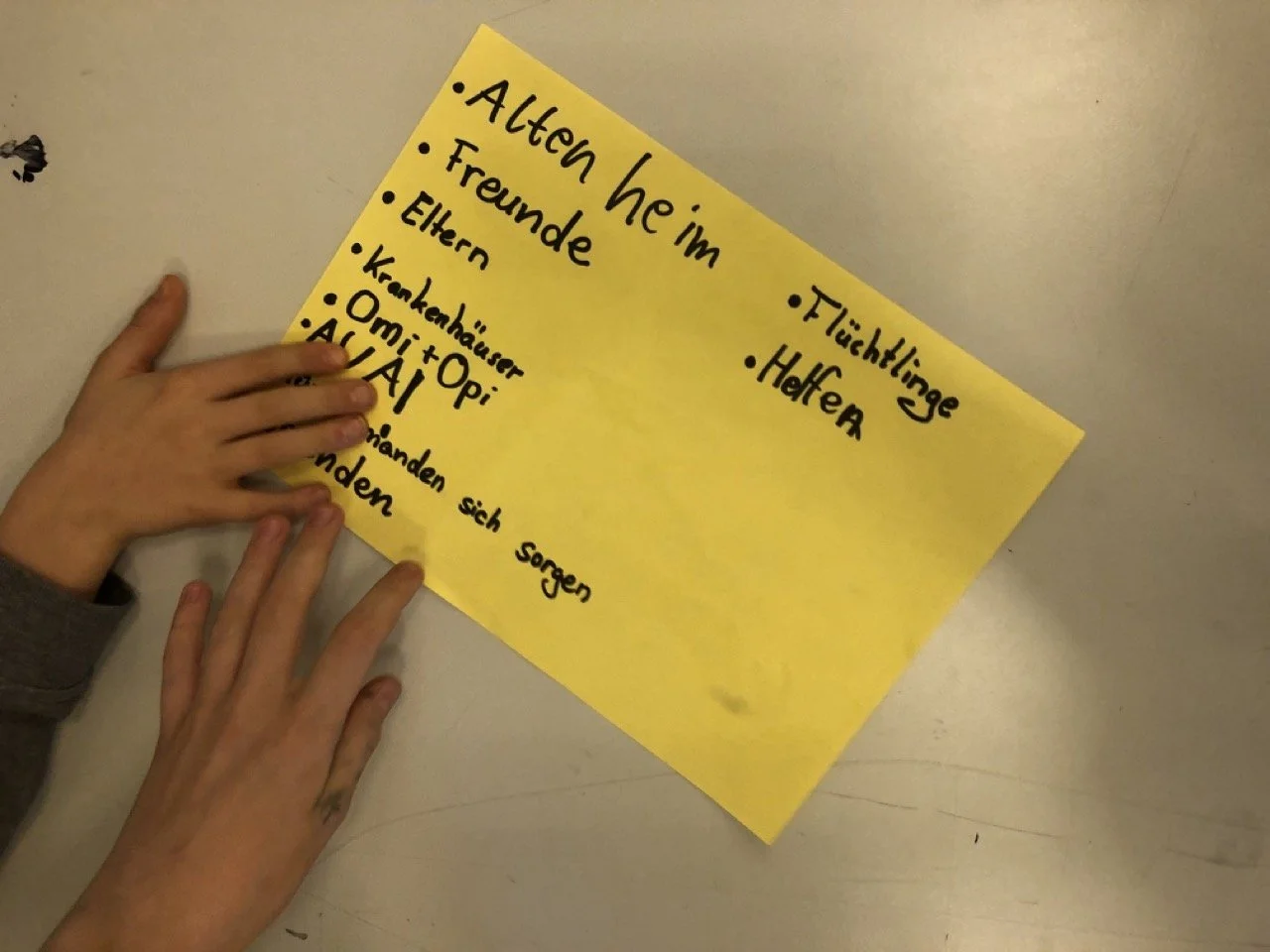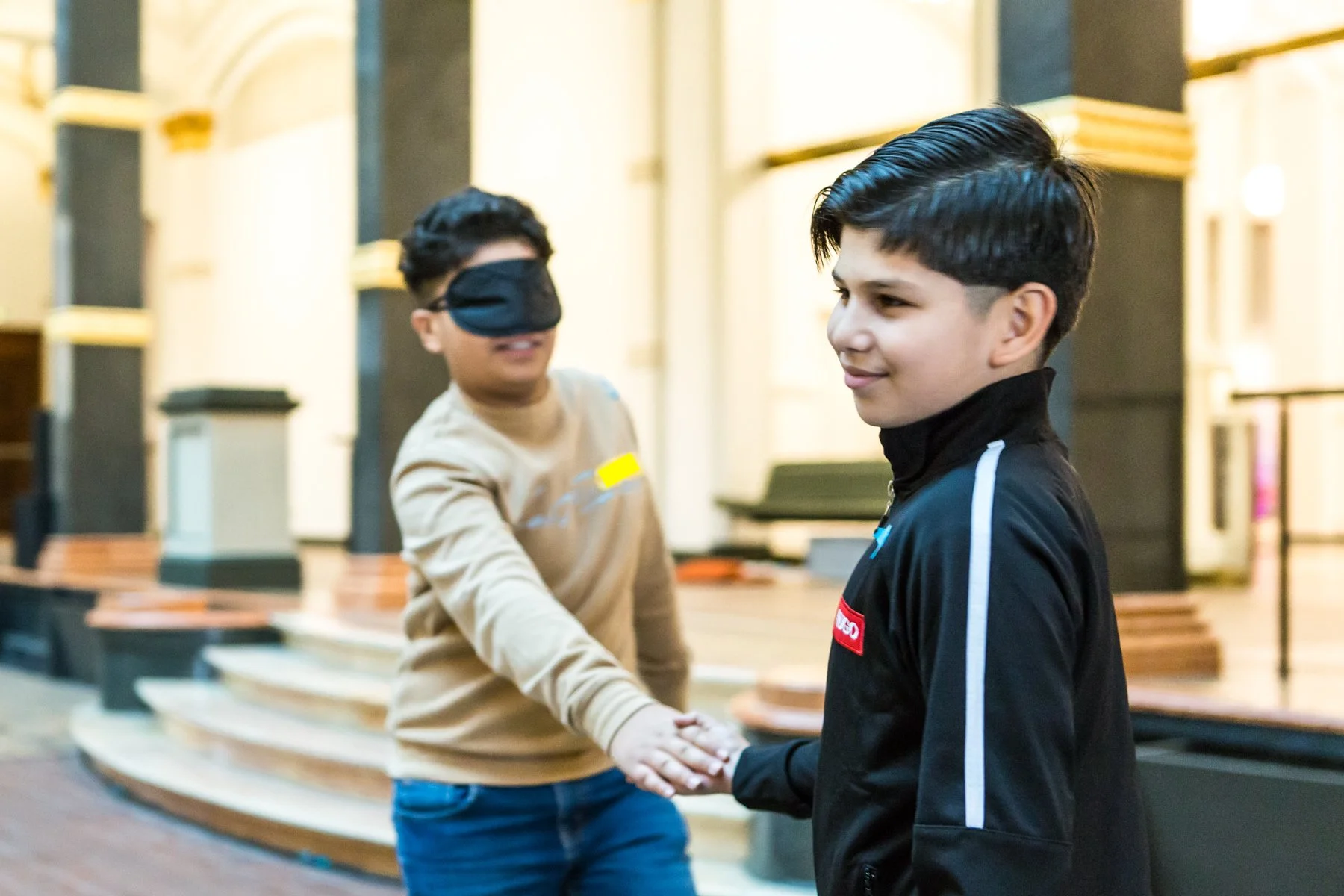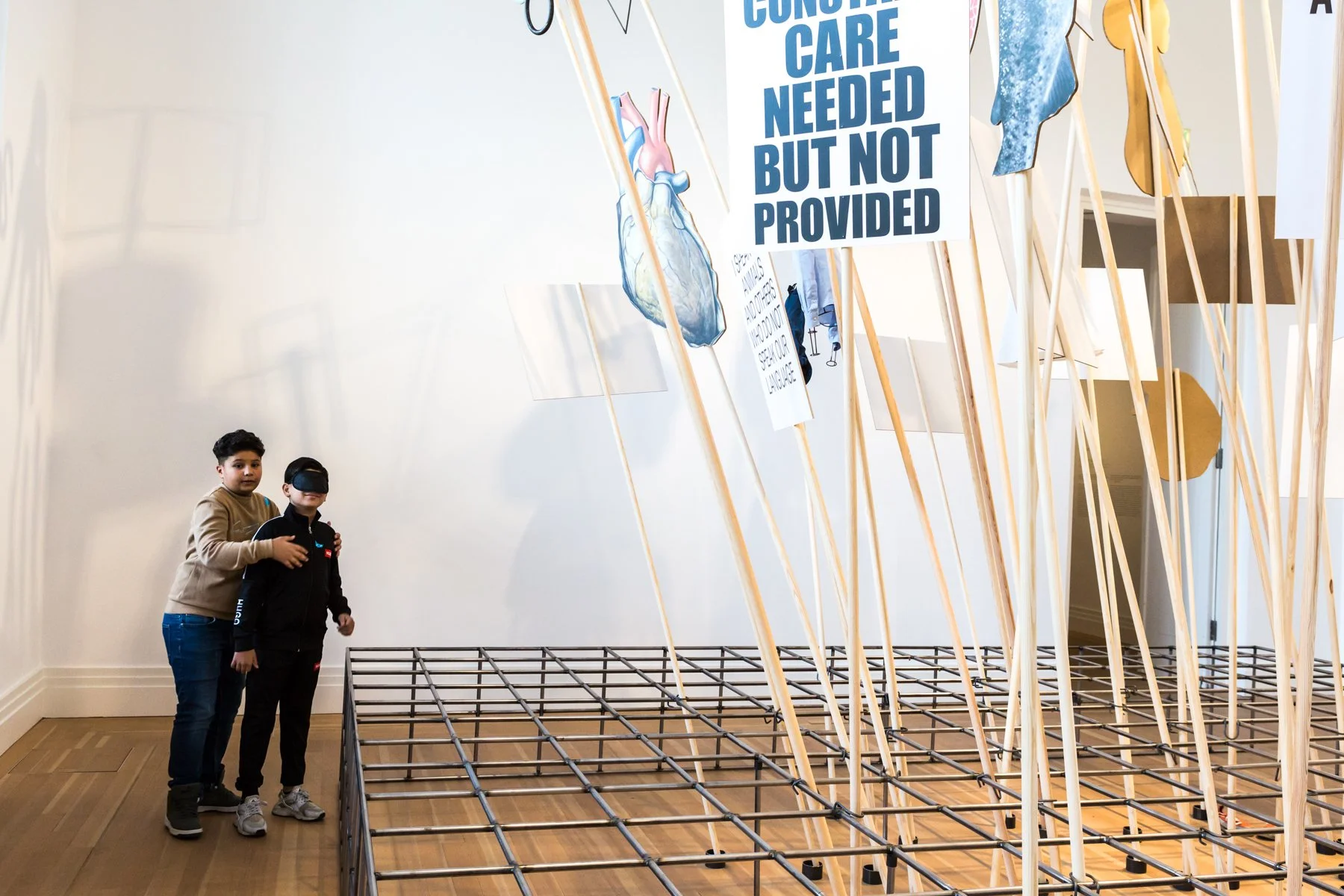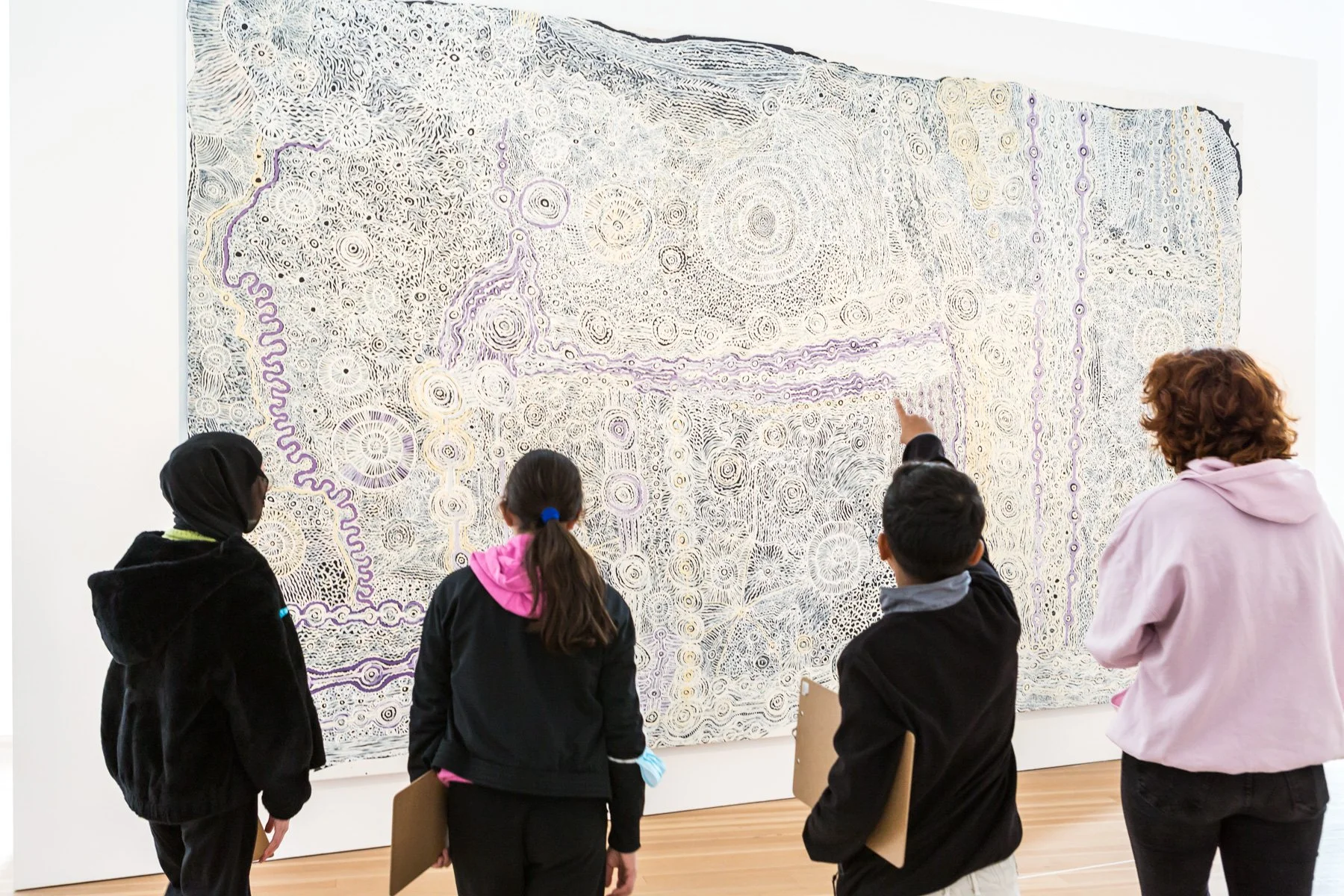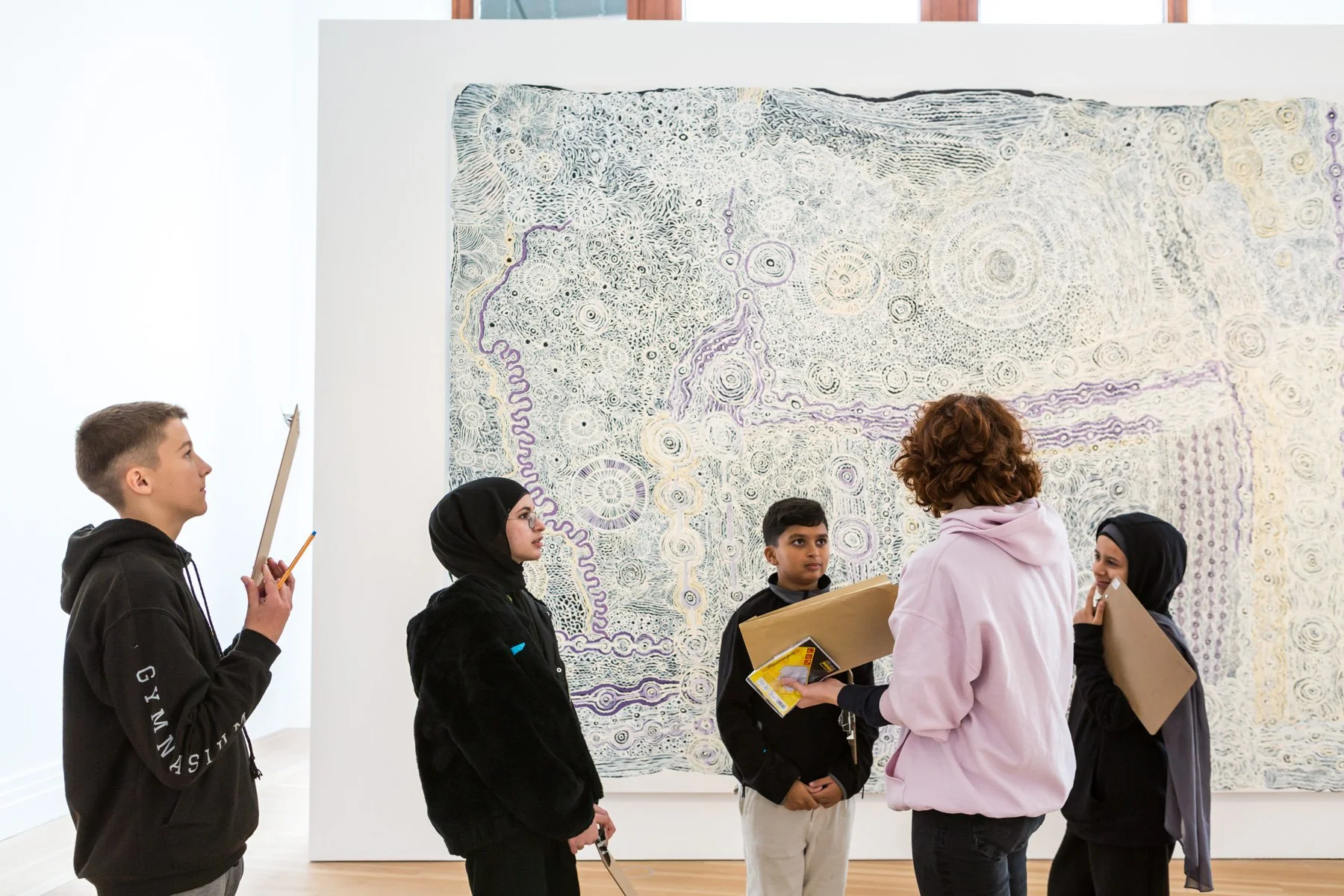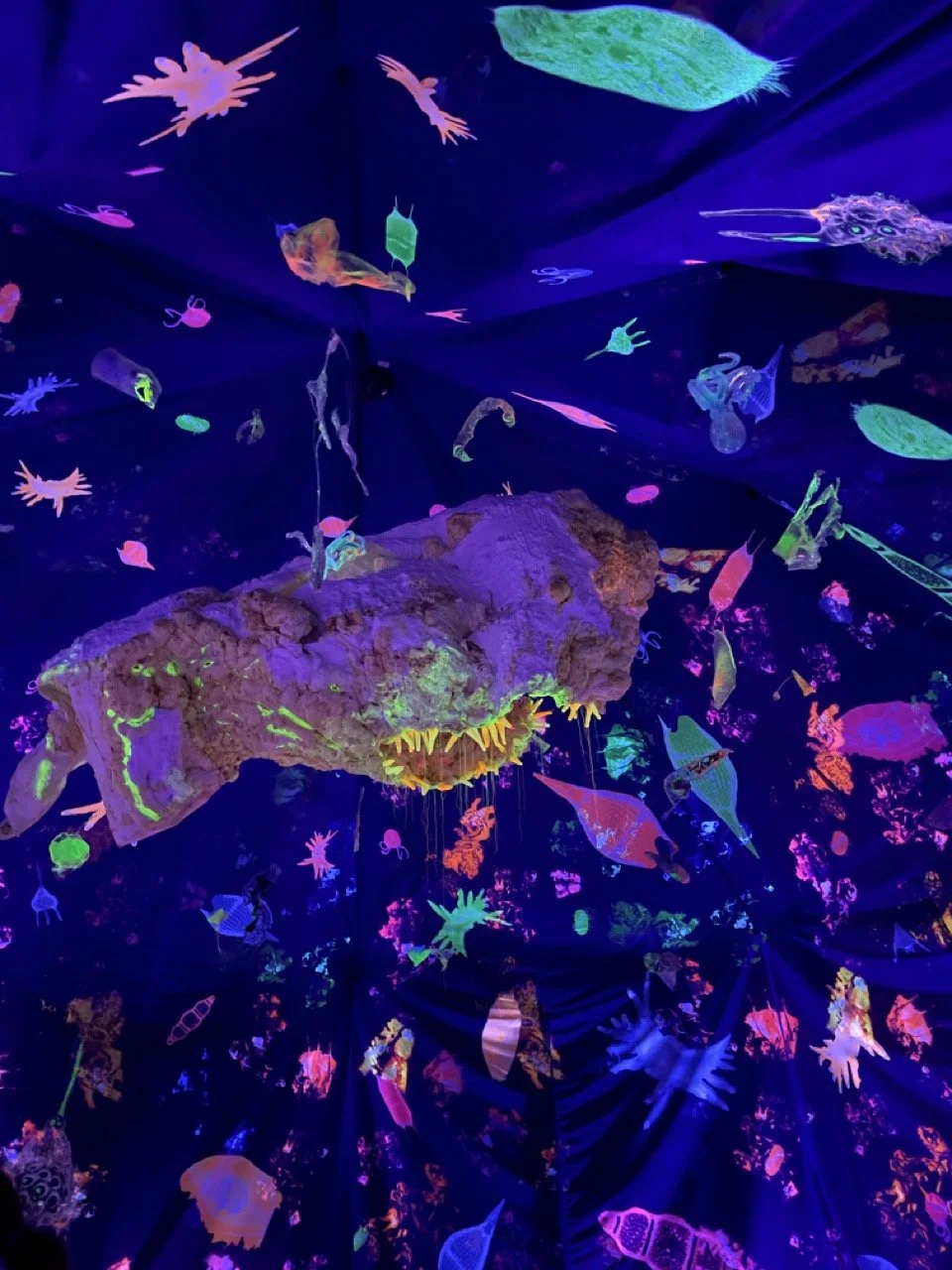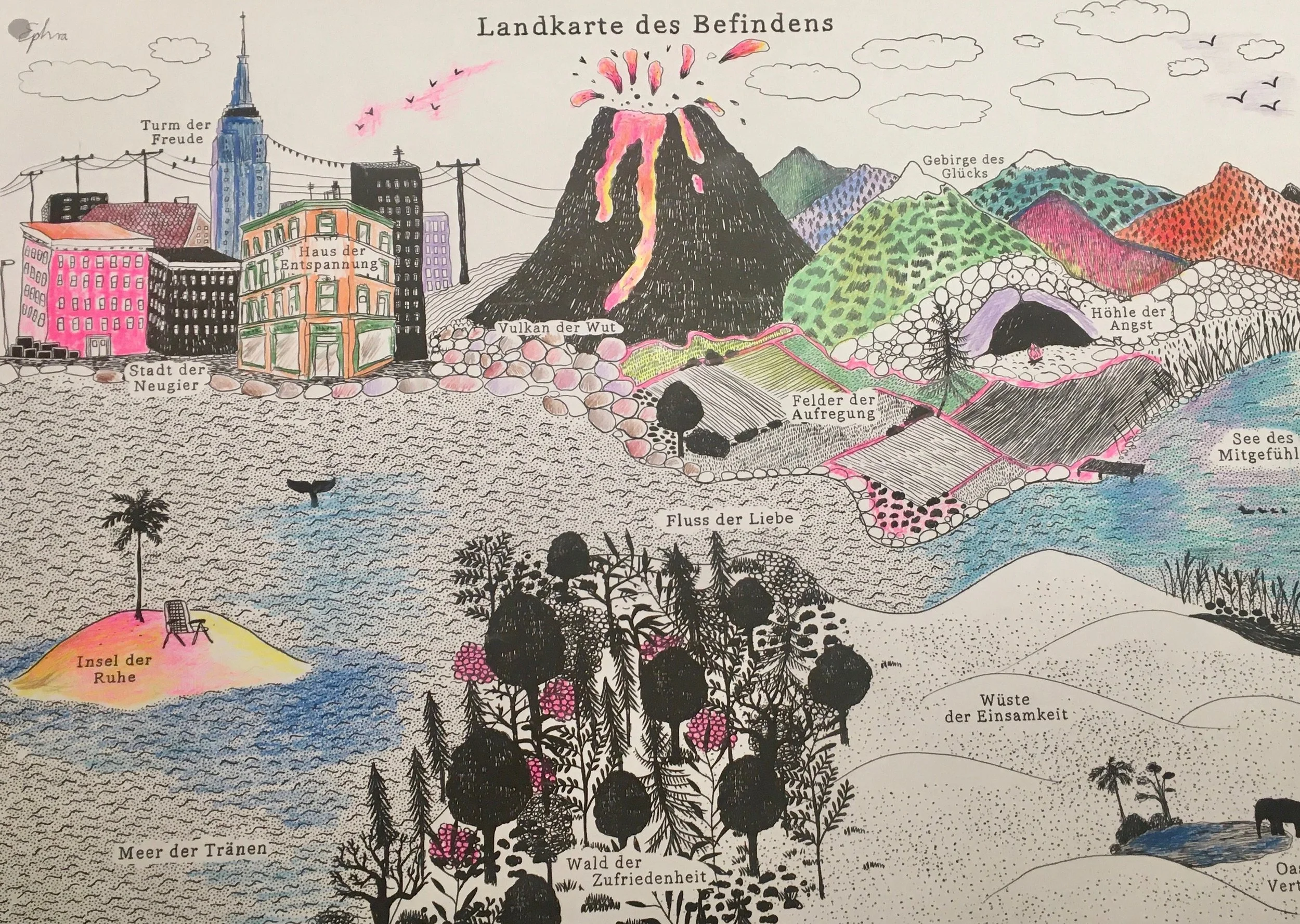Caring, repairing and healing together
A school workshop in the exhibition YOYI! Care, Repair, Heal
A 5th grade class from Kreuzberg’s Glaßbrenner Elementary School has just arrived at the Gropius Bau for an Ephra workshop. The children wait in anticipation in front of the glass entrance door until the security guard has opened the lock in an elaborate procedure. And then it starts right away!
Malu from Ephra tells us a bit about the exhibition: that the title YOYI! in the language of the Tiwi – the indigenous people of northern Australia – calls for a shared ceremony of celebration and mourning, and that the exhibition brings together works by artists and collectives from all over the world. (At this point Malu shows an Australia-centric world map and indeed many dots marking the artists origins are stuck in Oceania, Africa and Asia.) She goes on to explain that all the works have to do with the themes of care, repair, healing (i.e. Care, Repair, Heal). But what do these large and rather unwieldy terms mean?
In three small groups, the students discuss what they can think of. What kinds of things need to be repaired or can be repaired? Who is responsible for healing? What does caring mean and what does friendship have to do with it?
In the exchange with the other groups, it quickly transpires that the terms are connected in a certain way. To repair something means to make it good again or whole again, and in healing, too, the goal is to cure something that is sick, in other way, to make it healthy. And for that, it usually needs the help of others who care and look after it. This also has a lot to do with trust!
Appropriately, the way into the exhibition is an exercise in trust: two students take turns guiding each other through the large atrium blindfolded. This is more difficult than expected – both for the leading, sighted person and the blind, guided one. There's a staircase coming up, but is it going up or down? How many steps are there and when is the right time to announce an obstacle?
Arriving in front of Eva Koťátková’s installation “Confessions of a Piping System”, the sighted describe to their partners what is in front of them: a metal frame with wooden rods sticking out of it, printed signs on it, animals, small clothes, metal organs. Or is that a fly swatter? Now the others are also allowed to look, to walk around the work and inspect it. “I speak for the sick who cannot afford to be sick” is written on one sign, for example. What could that possibly mean?
A classmate thinks of her mother when she had to write an important paper. She simply couldn't get sick, otherwise she wouldn’t have finished the paper on time. Someone else thinks of people who earn so little that they can’t call in sick because otherwise they would have even less, or people who have no health insurance. That's where it’s good that someone stands up for these people, gives them a voice and cares about them. Because that's what the artist wants to explore and draw attention to how individuals and groups are silenced, discriminated against or controlled by states and institutions. Everyone agrees that the needs and wishes of children are also taken far too little seriously in our society.
Then we continue – blindfolded again through the atrium – to the work of Maringka Burton and Betty Muffler. How can one describe this large painting? Phrases such as “purple strings with circles”, “very vivid”, “many dots”, and the thickness of the brushstrokes are illustrated on the blind person's hand. Still, when the masks are removed, all the students are surprised at how much larger the painting is – and how it actually looks. With its many brushstrokes in pastel colors, it reminds some of Vincent van Gogh’s “Starry Night”, while others see a summer landscape, lots of movement, or a chain reaction.
Malu tells us that the two related artists are part of the Anangu community in South Australia and are highly respected healers who care for people’s physical and emotional health. The painting they did together is called “Ngangkari Ngura (Healing Country)” and shows the landscape and waterways of their country as a place of healing. This is because during the British colonial rule, this area was severely damaged, especially as a result of nuclear weapons testing. The ozone hole over Australia and the dying coral reefs off the coast also come to mind for the students, who need healing.
Those are just the right cues, and Malu leads the group to the last stop of the workshop: Anne Duk Hee Jordan’s installation “Worlds Away”. The space feels really far away, is completely dark and simulates a deep sea environment where smaller and larger creatures swim. Here in the darkness, the sensory perception is quite different: you can feel the vibrating floor and a certain heaviness, plus strange sounds that sound muffled, like you're underwater, or as if you're in the heart of a large creature. Some of the fluorescent creatures could be old plastic bottles or bags, and the large one in the middle an animal carcass. Or a comet after all?
According to Malu, Anne Duk Hee Jordan is a diver herself and wants her work to raise awareness about how we treat other life forms around us. After all, there is so much we don't know about the deep sea, even though we humans pollute and cause great harm to the underwater world every day through chemicals, trash and noise -actually the opposite of caring, repairing, healing.
With mixed feelings, the group walks back to the exit, but this time with their eyes open past Wu Tsang’s video work “Of Whales”, which tells the story of Moby Dick from the whale’s point of view.
Finally, Malu distributes a drawn map – the “map of the state of mind” (Landkarte des Befindens) – on which the students can note the feelings they associate with the artworks they have seen. What all participants took away: We should all put ourselves in the shoes of others much more often and take on other perspectives, then it will work out much better to care, repair and heal together!
Photos: Laura Fiorio, Ephra
Illustration “Landkarte des Befindens”: Marie Parakenings

